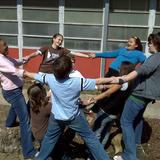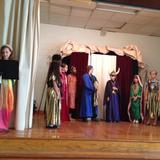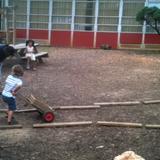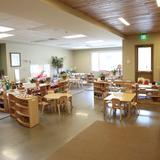Alabama Waldorf School is committed to providing a rich and balanced educational experience which actively engages the child, not just in his/her intellectual life, but in their moral and practical life, as well.
Waldorf education is grounded in strong academics, enlivened by the arts, and made concrete by practical experience.
Our faculty draws on the student's innate sense of wonder to nurture an eagerness to learn, and each teacher honors the individuality of each student under the umbrella of the developmentally-appropriate Waldorf curriculum.
Quick Stats (2024)
- School Type: School with Special Program Emphasis
- Grades: Prekindergarten-8
- Enrollment: 169 students
- Yearly Tuition: $6,000
- Acceptance rate: 90%
- Average class size: 12 students
- Application Deadline: None / Rolling
- Source: Verified school update
School Overview
School Type
Religious Affiliation
Grades Offered
Grades Prekindergarten-8
Year Founded
1987
School Calendar
Student Body
Total Students
169 students
Student Body Type
Co-ed
% Students of Color
13%
State avg.: 24%
Students by Grade
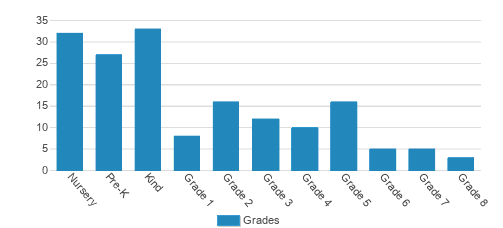
Academics and Faculty
Total Classroom Teachers
4 teachers
Student : Teacher Ratio
42:1
National avg.: 13:1
% Faculty w/Advanced Degree
32%
Average Class Size
12 students
List of Courses Offered
Classroom Dress Code
Casual
No media-themed clothing
Tuition and Acceptance Rate
Admission Deadline
None / Rolling
Yearly Tuition Cost
Tuition Notes
$6,000 is an average; tuition in full-day programs ranges from $4,400 - $8600 depending on the program (5-day Nursery = $4,400; grade 8=$8,600). Partial programs in Preschool is prorated based on number of days enrolled. Tuition Adjustment is available a
% on Financial Aid
43%
Acceptance Rate
90%
National avg.: 85%
Admissions Director
Opal South
Admissions Associate
Rachel Baay
School Notes
- The AWS Preschool is a program that emphasizes the
developmentally-appropriate ideal of play as work for the child
under seven years of age. The rich language of the stories told in
the classroom, the seasonally-relevant poems and songs that compose
the daily morning circle, and the artistic and practical activities
modeled by the teachers all lay a firm foundation for the academic
expectations of the Waldorf Grades program.
- In the Nursery (serving children ages 18 months to 3 years), the child's imagination is encouraged during outdoor and indoor playtime. Using simple, unformed toys, pieces of smooth wood become fruit or cars; colored silks become capes or blankets or parachutes; chairs and baskets become houses. To become fully engaged in such play builds the child's capacities for later problem solving, critical thinking, and concentration. Nursery teacher:child ratio is 1:8.
- Kindergartners (ages 3 to 6) spend progressively longer periods of time engaged in active learning through stories and songs during the morning circle time. Listening and participating in storytelling lengthens their attention spans, develops phonological awareness, and strengthens their capacity to create those inner pictures essential for successful reading comprehension in the grades. Watercolor painting, beeswax modeling, felting, and simple sewing enhance their fine motor skills and hand-eye coordination. The daily schedule, or rhythm, is carefully planned to provide not only a healthy balance of concentrated and free activities, but also for a sense of security in the young child. Teacher:child ratio is 1:11 in the Kindergarten.
- In the elementary and middle school, the developmentally-appropriate, multi-sensory presentation of each subject engages the student in the learning process. During the two-and-a-half hour Main Lesson, active learning is balanced with desk work, allowing for a healthy and joyful classroom environment of lively and eager learners. Core academic subjects such as Language Arts, History, and Mathematics are enlivened with artistic activities, and presented in such a manner as to reach all types of learners. Science is emphasized throughout the grades as a subject that should be both experienced and studied through careful observation.Teacher:student ratio is 1:18 but hovers around an average of 1:12.
- In addition to the core academics, the Waldorf grades
curriculum includes two foreign languages, vocal and
instrumental music, Movement Education, and Handwork.
- Taught by native speakers, the Russian and Spanish languages are taught immersion-style beginning in first grade. This type of experiential learning promotes a global perspective on different cultures and traditions.
- Movement Education emphasizes cooperation in games, and balance and coordination in activities like jump rope and circus skills. In grade five, to accompany the history curriculum, the students participate in a regional pentathlon event with students from other Waldorf Schools in the Southeast.
- Handwork moves from simple finger knitting in first grade to crocheting and sewing in the middle grades, to building furniture in grade 8.
- Environmental awareness begins as early as nursery school with tasks as simple as dying fabric with flowers, and evolves in the grades with observations on local geography, and the cultivation of a sustainable school garden which yields fruits, flowers, vegetables and grains in varying seasons.
Source: Verified school update
Frequently Asked Questions
How much does Alabama Waldorf School cost?
Alabama Waldorf School's tuition is approximately $6,000 for private students.
What is the acceptance rate of Alabama Waldorf School?
The acceptance rate of Alabama Waldorf School is 90%, which is equal to the national average of 90%.
When is the application deadline for Alabama Waldorf School?
The application deadline for Alabama Waldorf School is rolling (applications are reviewed as they are received year-round).
In what neighborhood is Alabama Waldorf School located?
Alabama Waldorf School is located in the Crestwood South neighborhood of Birmingham, AL. There are 1 other private schools located in Crestwood South.
School Reviews
5 9/10/2019
We are new to the school this year. We have one child enrolled in the nursery and one in kindergarten. So far, we have been very pleased and honestly surprised at the level of kindness our children are shown every day. After 2 1/2 months of attending this school, they are both adjusting well and really like it. It has also challenged us at home to spend less time with screens and more time outside. Honestly, I almost wish I could find a good excuse to stop attending here so I could save on the monthly tuition bill, but I can't seem to find a good reason!
Endorse Alabama Waldorf School. Endorsements should be a few sentences in length. Please include any comments on:
- Quality of academic programs, teachers, and facilities
- Availability of music, art, sports and other extracurricular activities
- Academic or athletic awards
Recent Articles

Why Do Private Schools Get a Bad Rap?
The article encourages readers to look beyond stereotypes and consider the unique qualities each private school offers.

Unlocking the Future: The Power of STEAM Education
In this article we look at the benefits of a STEAM education, highlighting its interdisciplinary approach, the subjects involved, and the value it brings to students.

June 11, 2024
6 Schools and Their BeginningsThis article explores the rich histories of several prestigious schools in the United States, including the Allen-Stevenson School, Lycée Français de New York, Catherine Cook School, Shattuck-St. Mary's School, and The Spence School. It explores their origins, founders, growth, philosophies, and enduring legacies, highlighting their commitment to academic excellence and progressive education principles.






